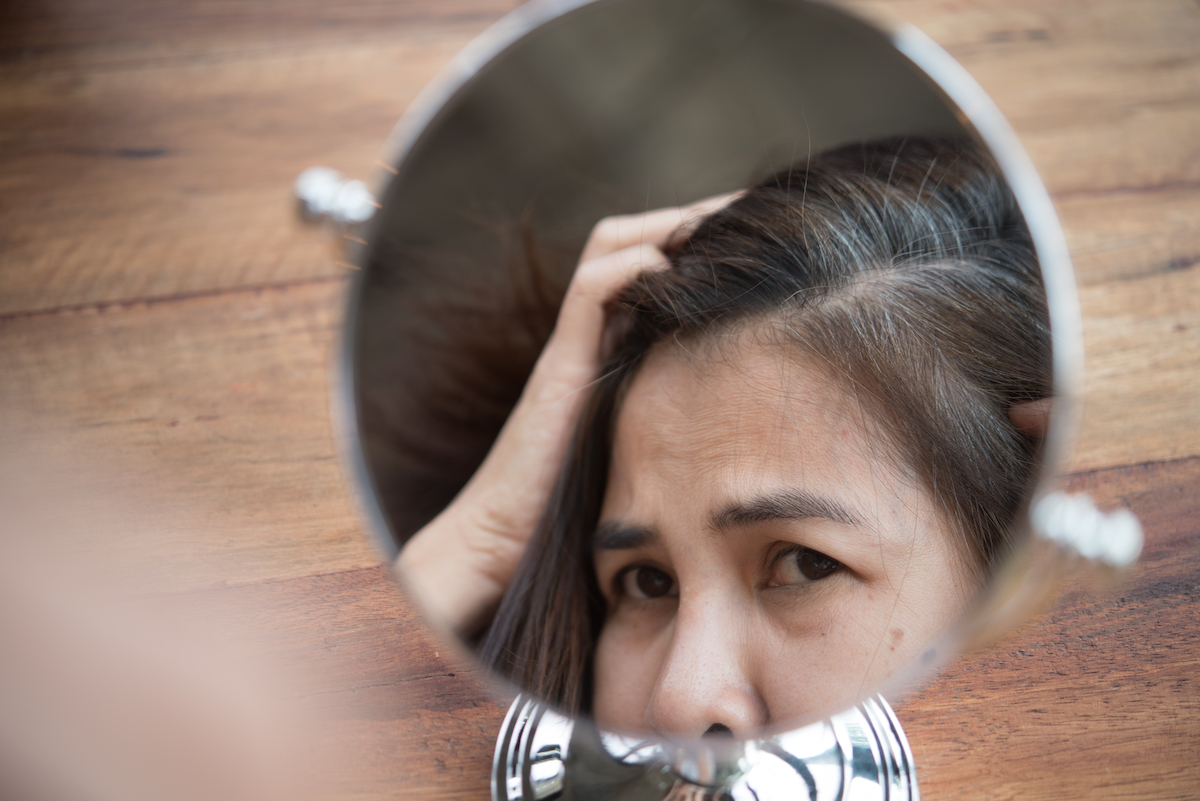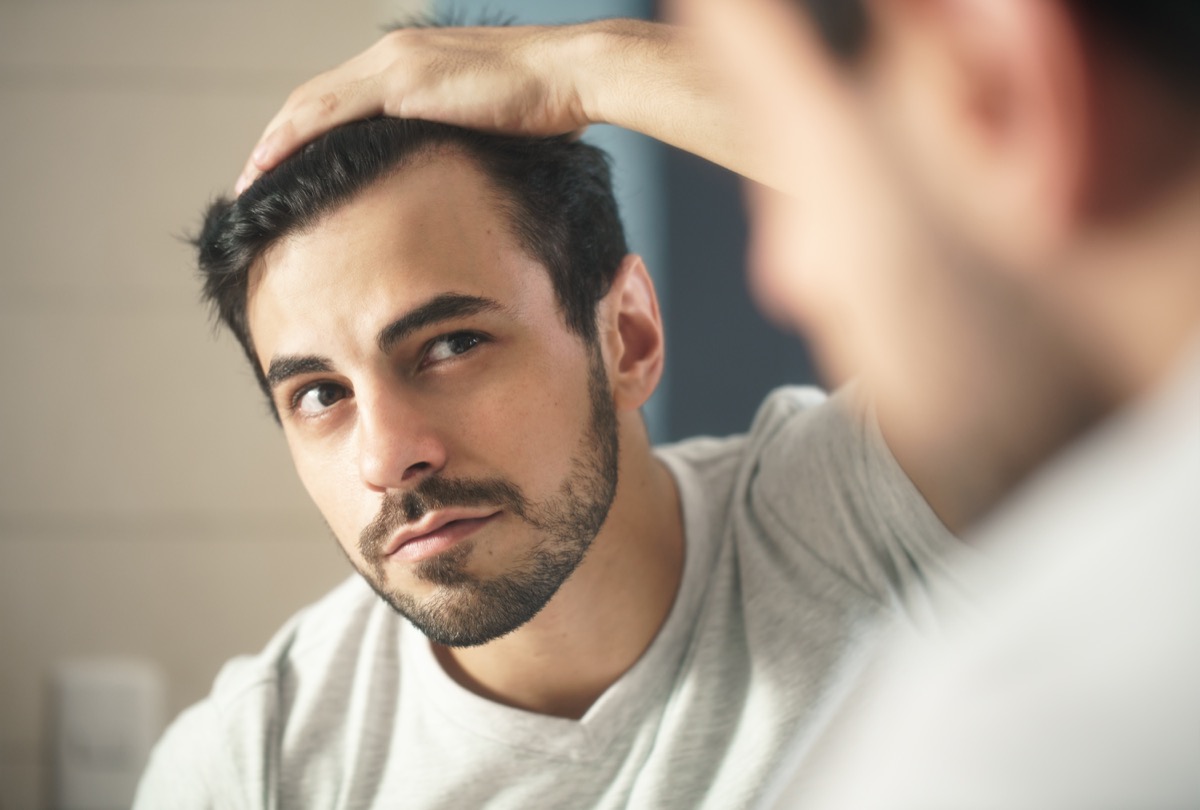RELATED: 17 Surprising Signs Your Hair Will Go Gray. If you’re concerned about keeping your natural color, you might want to find some time to relax. A new study published on June 22 in the journal eLife collected hair samples from 14 volunteers with an average age of 35 and an even split of seven men and women among the group. The study participants were then asked to create stress diaries based on their weekly schedules and calendars. The research team used a new method for capturing highly detailed images of tiny slices of human hair to quantify the extent of pigment loss, allowing them to see down to one-twentieth of a millimeter that represents one hour of hair growth. After comparing the changes to each participant’s diary entries, results showed that higher stress levels matched up with changes in hair pigment. RELATED: 13 Things Your Hair Is Trying to Tell You About Your Health. While the study’s findings are the first time hair going gray and stress have been quantitatively linked, you still shouldn’t expect to wake up from a brutal week at work to suddenly snowy white locks. “When hairs are still under the skin as follicles, they are subject to the influence of stress hormones and other things happening in our mind and body,” lead author Martin Picard, PhD, associate professor of behavioral medicine in psychiatry and neurology at Columbia University Vagelos College of Physicians and Surgeons, said in a statement. “Once hairs grow out of the scalp, they harden and permanently crystallize these exposures into a stable form.” Instead, researchers say the changes brought on by stress were much more gradual. “If you use your eyes to look at a hair, it will seem like it’s the same color throughout unless there is a major transition. Under a high-resolution scanner, you see small, subtle variations in color, and that’s what we’re measuring,” Picard explained. RELATED: For more up-to-date information, sign up for our daily newsletter. ae0fcc31ae342fd3a1346ebb1f342fcb Fortunately, being put through the wringer by your boss doesn’t necessarily mean that your hair color is permanently disappearing. The researchers found that once stress levels decreased, hair follicles went back to producing more normal pigment levels in each strand—in some cases, almost immediately. “There was one individual who went on vacation, and five hairs on that person’s head reverted to dark during the vacation, synchronized in time,” Picard said. The study authors also pointed out limitations as to who might see changes in their hair color. “We don’t think that reducing stress in a 70-year-old who’s been gray for years will darken their hair or increasing stress in a 10-year-old will be enough to tip their hair over the gray threshold,” Picard explained. The researchers ultimately concluded that their results showed external factors could play a significant role in the changes the body undergoes as we get older, meaning there could be major implications for understanding the aging process. “Just as the rings in a tree trunk hold information about past decades in the life of a tree, our hair contains information about our biological history,” Picard said. “Understanding the mechanisms that allow ‘old’ gray hairs to return to their ‘young’ pigmented states could yield new clues about the malleability of human aging in general and how it is influenced by stress.” Picard concluded: “Our data add to a growing body of evidence demonstrating that human aging is not a linear, fixed biological process but may, at least in part, be halted or even temporarily reversed.” RELATED: This One Supplement Can Slow the Aging Process, New Study Says.



